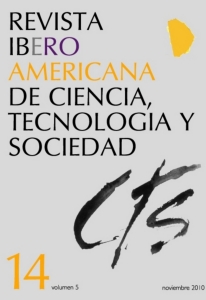Vexation Through Machines
The Concept of Artifice in Peter Sloterdijk
DOI:
https://doi.org/10.52712/issn.1850-0013-841Keywords:
artifice, Sloterdijk, humanism, technologyAbstract
The purpose of this article is to discuss the passage from the pre-modern technique to the modern technique by using the special concept of artifice presented by Peter Sloterdijk in his text “The vexation through machines”. This notion of artifice will be connected with some of Gilbert Simondon’s considerations regarding the technical object. We will consider, such as Sloterdijk does, which are the consequences of an outpost of the realm of machines in the constitution of the subjectivity and in the metamorphosis of the psyché. The questions that guide the work is why the humanist attitude that opposes man to machine since the Renaissance became strong and if it should be considered, as Simondon does, that this process is the expression of an ontological incomprehension of origins and functions of the technical object.
Downloads
References
GALIMBERTI, U. (2001): “Psiché y Techné”, Revista Artefacto. Pensamientos sobre la técnica, n° 4, pp. 37-46.
SIMONDON, G. (2007): El modo de existencia de los objetos técnicos, Buenos Aires, Prometeo.
SLOTERDIJK, P. (2001a): “El hombre operable. Notas sobre el estado ético de la tecnología génica”, Revista Artefacto. Pensamientos sobre la técnica, nº 4, pp. 20-29.
SLOTERDIJK, P. (2001b): “La vejación a través de las máquinas”, en P. Sloterdijk: Essai d’intoxication volontaire, suivi de L’heure du crime et le temps de l’oeuvre d’art, Paris, Hachette, pp. 235-272.
SLOTERDIJK, P. (2004): El sol y la muerte. Investigaciones dialógicas, Madrid, Siruela.
Downloads
Published
How to Cite
Issue
Section
License
Copyright (c) 2025 CC Attribution 4.0

This work is licensed under a Creative Commons Attribution 4.0 International License.
All CTS's issues and academic articles are under a CC-BY license.
Since 2007, CTS has provided open and free access to all its contents, including the complete archive of its quarterly edition and the different products presented in its electronic platform. This decision is based on the belief that offering free access to published materials helps to build a greater and better exchange of knowledge.
In turn, for the quarterly edition, CTS allows institutional and thematic repositories, as well as personal web pages, to self-archive articles in their post-print or editorial version, immediately after the publication of the final version of each issue and under the condition that a link to the original source will be incorporated into the self-archive.











